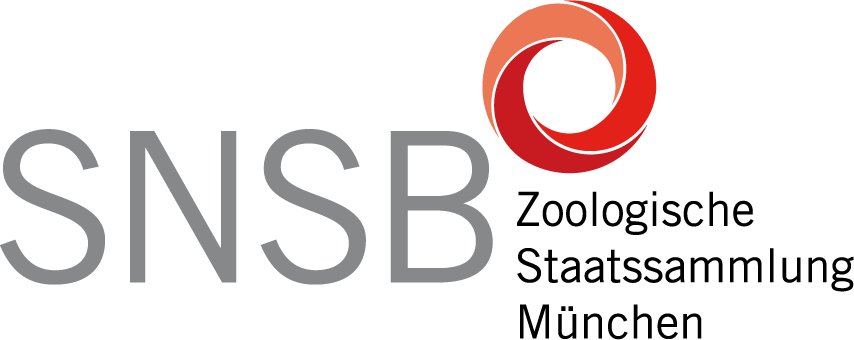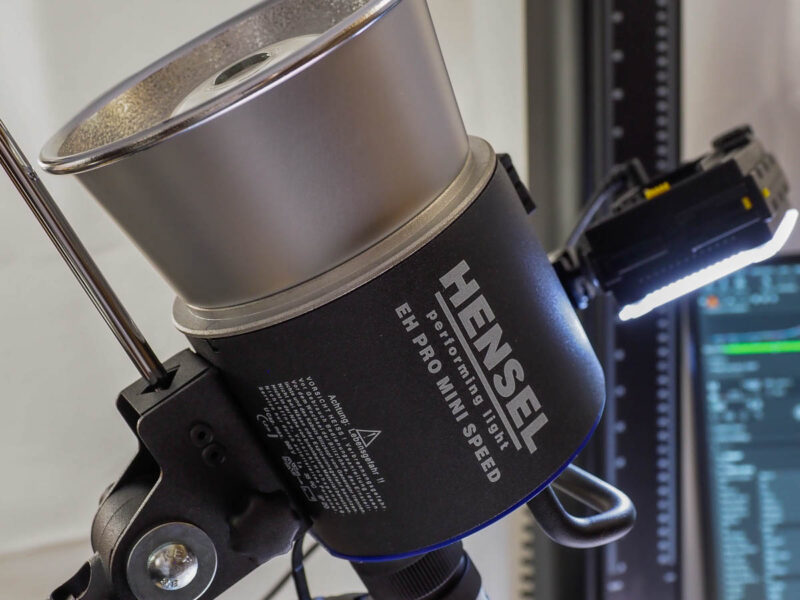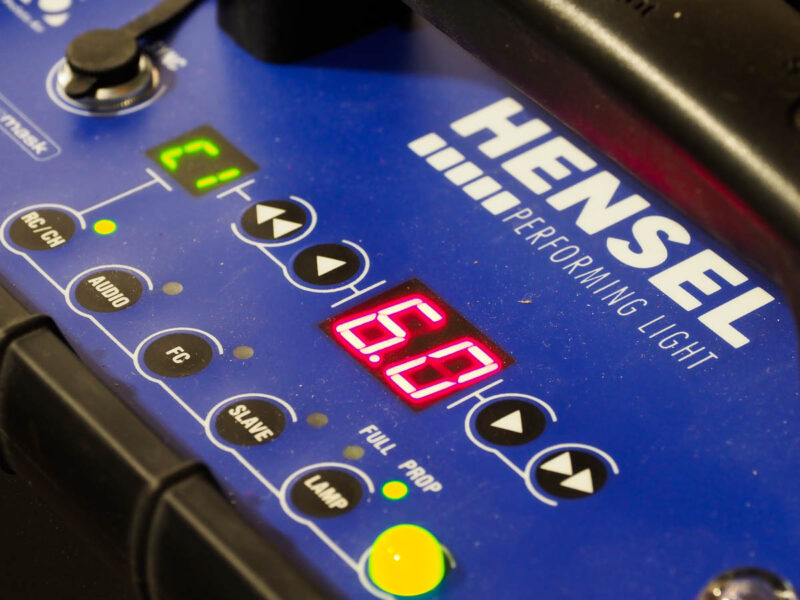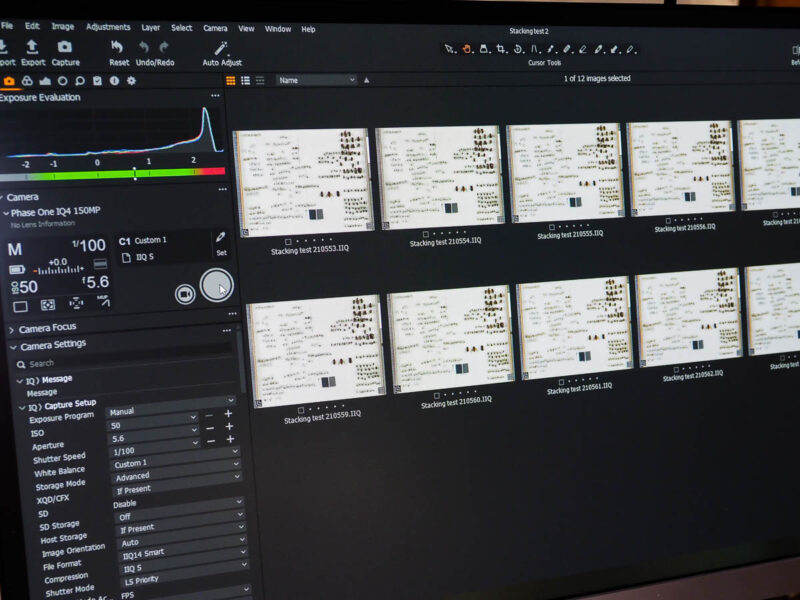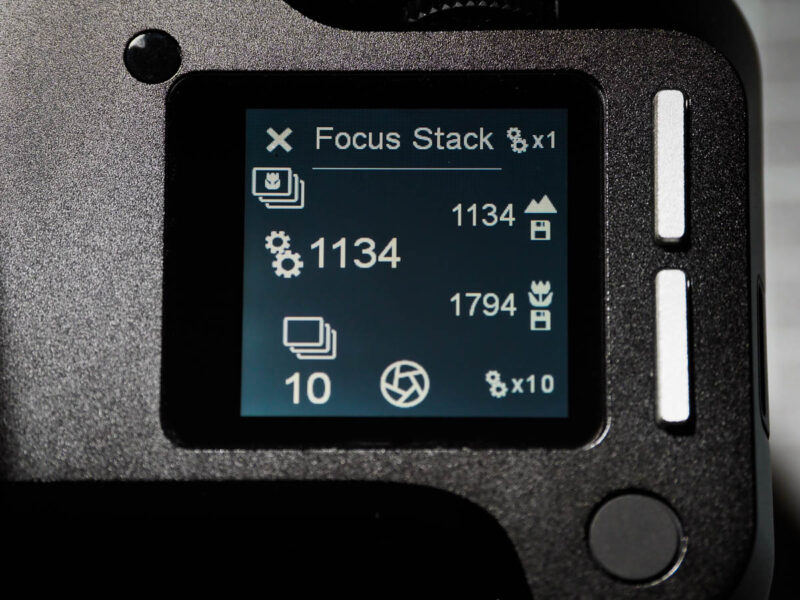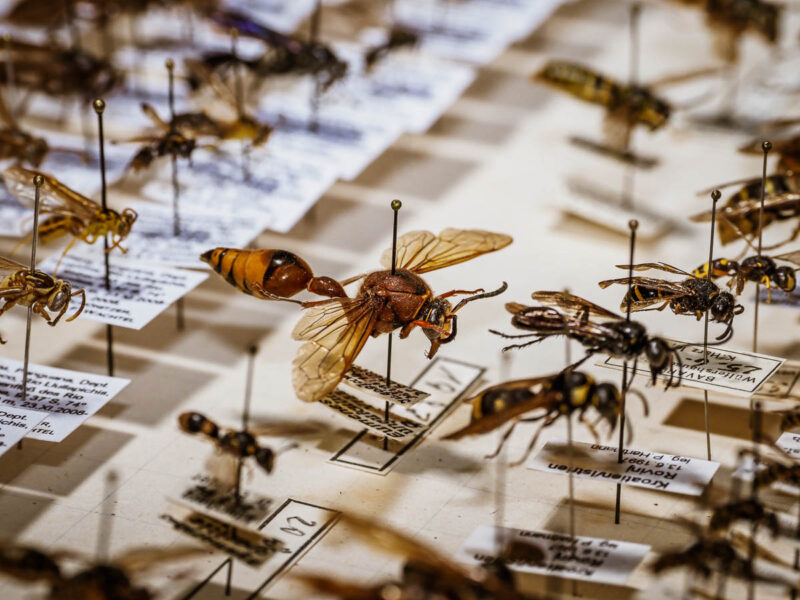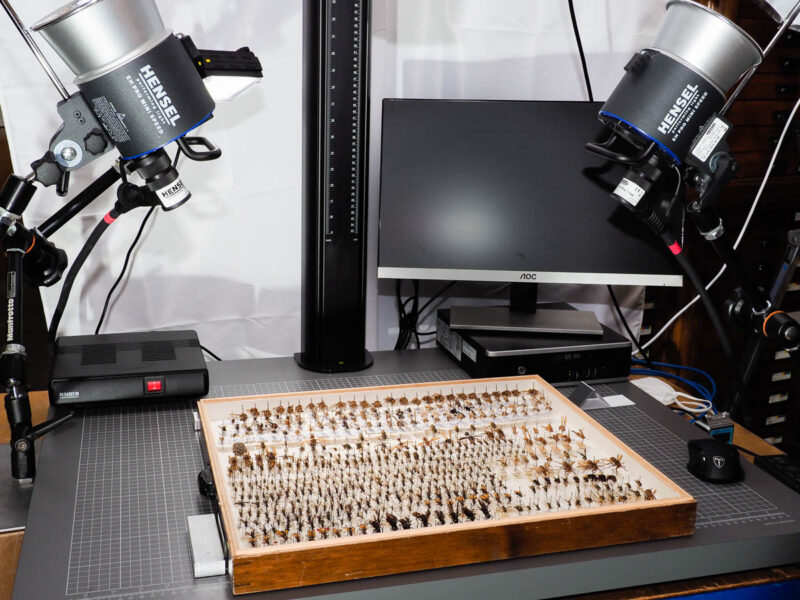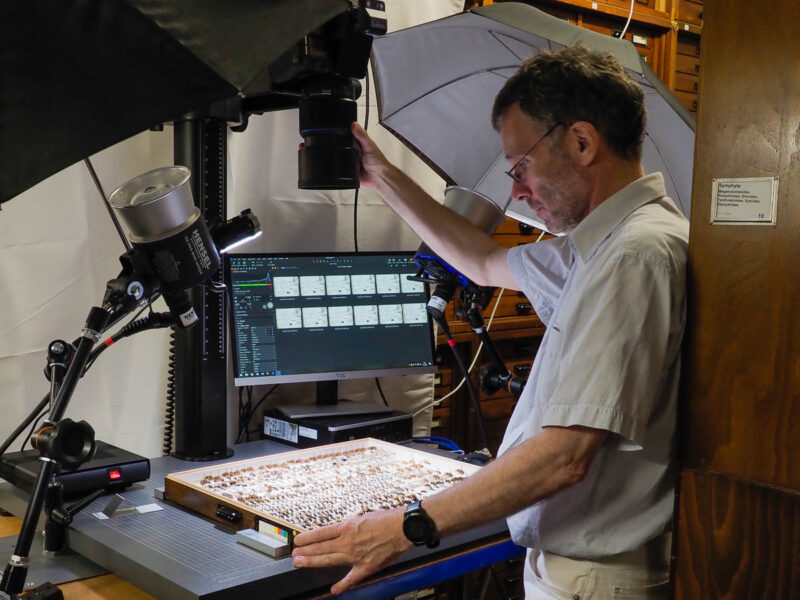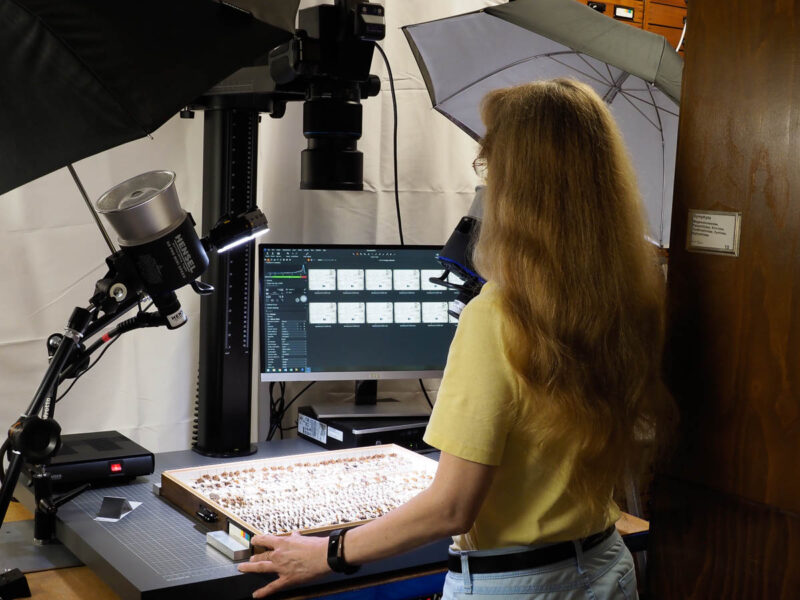DScan 2.0 – Drawer Digitalisation
DScan 2.0 is an integrated system for digitally capturing insect drawers. The system consists of a high-resolution camera for taking images of whole insect drawers and a stationary or mobile application for recording collection objects. The current system consists of the following components:
- Phase One XF with 150 MP IQ4 back
- Schneider-Kreuznach 120 mm LS f/4.0 macro lens
- Hensel Nova DL 1200 flash generator with 2 EH Pro Mini Speed flash heads
- Kaiser RSD 1.8 Mot repro tripod
- File server (NAS) for storing images and accompanying data
- Workstation PC for image processing
- File server for local backups
- Backup server for offsite backup
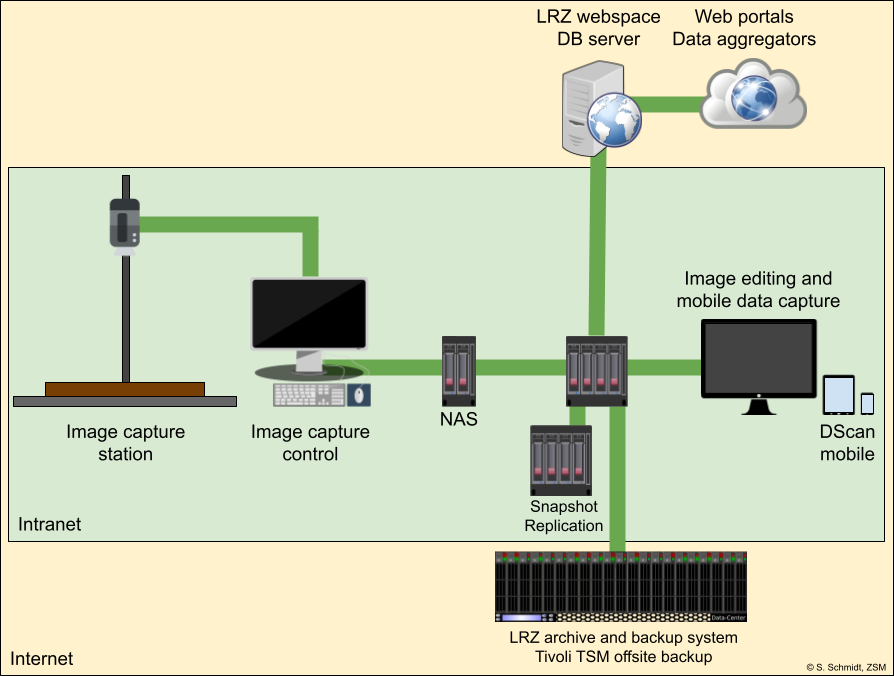
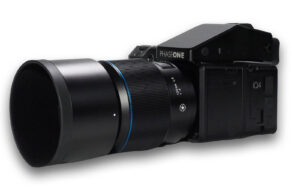
Camera
The camera is a Phase One XF with IQ4 back. The medium format sensor with 150 million pixels delivers an image quality with a resolution, dynamic range and detail richness that until now could only be achieved with elaborate stitching methods. In addition, the camera offers a focus bracketing function to achieve maximum sharpness at shallow depth of field. A Schneider-Kreuznach 120 mm LS f/4.0 macro lens is used for optimum image quality at close range.
Workstation PC
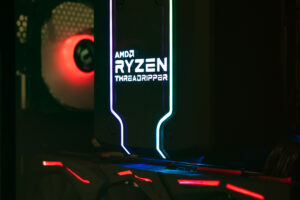
An AMD workstation with a Ryzen Threadripper processor is used for image processing and accounting of the individual images for stacking shots in Helicon Focus. Helicon Focus version 7 can use the graphics card for processing. The Radeon RX590 graphics card installed in the workstation needs approx. five seconds to process 100 individual images (20 megapixel jpeg format) using method C in Helicon Focus version 7.
Processor: AMD Ryzen Threadripper 2950X, 16 cores, 32 threads
Motherboard: ASUS ROG ZENITH EXTREME X399
Graphic: AMD Radeon RX 590
RAM: 64 GB DDR4
Mobile Workstation
A ThinkPad P15 with 4K and ~100% Adobe RGB display is used as a mobile workstation for image capture and editing. The Lonovo P15 was developed specifically for photographic purposes in mind and has sufficient computing power for processing large image files.
Processor: Intel i9, 8 cores, 16 threads
Graphics: Nvidia Quadro RTX 3000
RAM: 64 GB ECC DDR4
Software
Capture One image editing software is used for editing raw files. The programme has a built-in tethering function adapted to Phase One cameras. In the programme, image processing can be largely automated and images exported in a format suitable for stacking software. For each insect box, 10-12 individual images are shot in RAW format, which after export in TIFF format are processed in Helicon Focus (method C) to produce a sharp image. The final images are processed in Capture One and archived in TIFF format.
To create zoomable images of the insect drawers that are suitable for web display, images are segmented into smaller tiles using the panorama software krpano. It allows large image files to be displayed in zoomable form in the web browser, with files generated in HTML5 format that can be displayed with all modern browsers.
An application was developed to record insect collection data. It was primarily designed for use with mobile devices, but can also be used stationary. The app can be used to record the core data of the species present in insect collections. This includes taxonomic information, number of individuals, sex, geographical information as well as relevant information on the respective part of the collection. Drawer contents can be inspected using high-resolution images and species can be assigned using reference lists. Each insect drawer is assigned a unique ID that can be read via QR code in the app or with a barcode reader. The data is stored in an online database and can be accessed directly from there or from anywhere via an API.
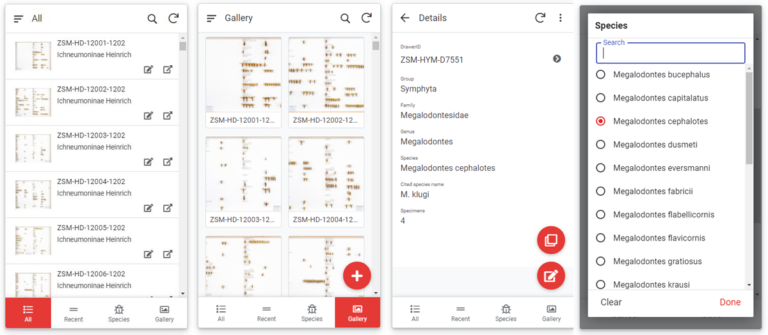
Sample Images
The historic insect collection of E. Enslin
